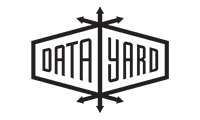“By failing to prepare, you are preparing to fail.” –Benjamin Franklin
WordPress vulnerabilities and exploits have filled the press lately, with 3 urgent security releases in the past month alone. The popular content management service (CMS) powers nearly one quarter of the web, making WordPress a ripe target for exploitation and a big concern for website owners and visitors to those sites.
A recent study from W3Techs shares that 47% of WordPress users only back up their sites “every few months,” with 25% saying they’re not trained in using WordPress at all. If exploited, however, nearly 25% say they would pay “almost anything” to get the lost data back. Add that to another 20% who would pay “several thousand dollars” to recover, and we’ve got almost half of WordPress users who recognize the price of inaction.
Why are these sites so vulnerable? In failing to prepare. Nearly half of the respondents reported having no IT or Website Manager. They are using WordPress because the CMS makes editing and adding site content easy for an everyday user. Sales and marketing teams are often left minding the shop with little to no technical training on the backend of the website.
WordPress itself is very responsive when it comes to releasing updates to patch holes as they come up, but they have to be implemented.
Where do you stand?
If you’re using the fully hosted WordPress.com solution, then the updates are part of the package. If you’re using the self-hosted WordPress.org solution, then it’s up to you to be prepared. (Not sure? More here.)
On self-hosted websites, the key is in how rapidly the security updates and patches are adopted. Security updates and patches are boring maintenance items, often not included in the overall website plan.
What can you lose?
Walking through the door to Customer Service, you see they’re really hopping already with email, chats, phones… Wow! Then, you catch the conversation in the room, and you realize there’s something wrong. Really wrong.
The site is not doing what it’s supposed to be doing. Content has changed. Customers are being redirected to odd places. They report suspicious pop-ups and installation requests. Some even, trusting you, have allowed these things to run.
Your website is doing a lot…of all the wrong things. You’ve been hacked.
Websites drive revenue, provide information, collect donations, and communicate on your behalf. When the site stops working, your mission and reputation are in jeopardy. If you collect information on your users, breach of privacy may open you up to additional cost and liability.
What can you do?
Designers and developers build content, behavior, graphics, features, shopping carts, etc. It’s tested and then deployed to a hosting provider. After a final check, the keys are turned over to the company. If it’s up to you, what do you do?
First, WordPress is not alone. Open-source (WordPress, Drupal, Joomla) and proprietary CMS platforms are all susceptible to exploit.
As a hosting provider for many self-hosted websites built on a variety of CMS platforms, what do we see? How do successful sites not only launch, but also remain secure and successful?
Know your CMS.
Communication is the key. When you’re building your website, get everyone together, and keep them talking on a regular basis. Ask a lot of questions along the way.
- What CMS forms the foundation of the site? What permissions can be set for users? Many users posting content to the site may not need permission to change core elements about the site’s base architecture.
- What plug-ins or add-ons contribute to the functionality? While recent exploit targeted the core WordPress CMS, these integrated programs interact with the sites and can also be targets for getting past site security.
- Does your CMS have an auto-update function? WordPress offers a few options that can be set to help keep you current. If not, does the CMS offer alerts or an update blog site so that you can stay current on any issues?
- What must be managed manually? Major version changes of the core CMS often require compatibility testing and are often not automatic as a result. Set up a testing and release schedule for these big changes.
- Staying on the current version means that you’ll also stay up to date with the most recent security patches. Seen in every technology platform, end of life for a version means no one will be trying to keep it patched and stable.
Know your role.
Remember that survey. Nearly half of site owners would spend thousands, if not “almost anything” to recover lost data. That’s a lot of Benjamins.
It is like a good insurance policy, and a better use of resources, to plan for maintenance instead of praying and paying for miracles after you experience a loss.
IT resources are needed to manage and maintain the live website. You don’t have to be that expert yourself, but don’t forget to budget for routine maintenance and updates when you’re allocating IT resources.
If you don’t have in-house expertise, consider a management agreement with your developer. Like oil changes for car, it’s part of the price of ownership.
Know your hosting provider.
Not all hosting providers are created equal. Your hosting provider should be an active partner: at a minimum, keeping the Windows- or Linux-based infrastructure stable, secure, and updated in its own right.
As a provider ourselves, we’re a bit biased here at DataYard. We think that a hosting provider should be so much more!
Customer service and support expertise are vital. At DataYard, we love being included in a website’s overall design and development from Day One. We’re experts on our hosting platform, the options available, and maximizing the architecture’s performance for your site.
We talk to you about the site architecture itself, and making sure it’s backed up on a regular schedule. Regular backups mean no mad scramble to see if anything can be recovered.
“When we work with the developers as a site is under construction, we look for bottlenecks to performance,” shares Ryan Chewning, DataYard Systems Administrator. “Most security plugins in WordPress, for example, are incompatible with one another even when they’re fine separately. Some of the security plug-ins help drop malicious connections rapidly, keeping system resources readily available.”
For those building a new website to replace an existing site with active customers, we have extra considerations. Ryan explains, “The user experience during any change is important, from incorporating plug-ins that seamlessly bridge site versions to minimizing any downtime needed to complete the transition.”
The relationship with your hosting provider should not stop when the site goes live. Active management is a valuable element to keeping your website healthy. A DataYard managed account is monitored for performance. With success and more traffic, needs change over time. Ryan concludes, “We watch for performance degradation and make proactive recommendations to keep the site growing along with you.”
What next?
Since your website ties to your bottom line, the bottom line is that you don’t want to trust it to just anyone. If you’re not sure what you have, now’s the time to ask. If you need some help looking at where you are and where you want to be, remember to ask your trusted partners here at DataYard.




